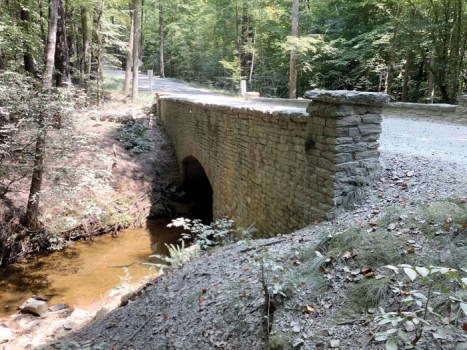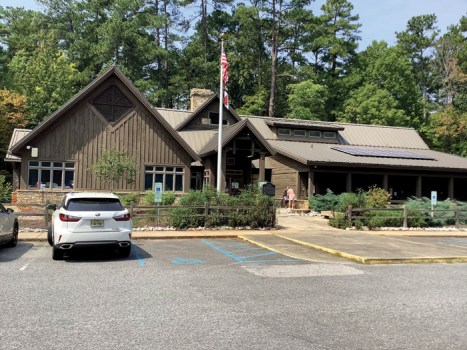David Freeze: Raleigh-area parks in one day
Published 12:00 am Saturday, August 31, 2024
Editor’s note: David Freeze is visiting all 42 state parks in North Carolina. Contact him at david.freeze@ctc.net.
I had three parks to visit on Wednesday, Aug. 28, and the Raleigh area had three close together. My first stop was at the Falls Lake State Recreational Area with 5,035 acres. The lake itself is 38,000 acres and has several access points at Beaverdam, B.W. Wells, Highway 50, Holly Point, Rolling View, Sandling and Shinleaf. Falls Lake is about 10 miles from Raleigh and 12 miles east of Durham. Prior to 1978, regular flooding caused extensive damage to public and private properties. The Falls Lake Project included the construction of a dam that was completed in 1981, thus harnessing the Neuse River for water supply, flood control and fish and wildlife conservation.
Fishing, boating and swimming are the main activities, but the park has over 300 campsites. Tent, trailer and RV camping are first class with centrally located bathhouses. I saw the expansive sandy swim beach at Sandling, and two more are at Rolling View and Beaverdam. To enter the swimming and boating areas, a fee of $7 per person is charged, but only $5 for seniors. One lady said, “If you are over 62, it is only $5.” She deserved an extra $5 for saying that. The fee is charged daily from Memorial Day through Labor Day, with additional weekends in April, the rest of May and September.
A nice visitor center has exhibits on area wildlife and a separate map for each access point. Fishing and boating are allowed, but some of the access areas are limited to non-gasoline motors. Kayak, paddleboard and canoes are available for rent.
William B. Umstead State Park in Wake County between Raleigh and Durham is also home for three man-made lakes. Big Lake is 55 acres, and Sycamore Lake and Reedy Creek Lake are about 25 acres each. Fishing, kayaking, canoeing and a boat launch are available. Umstead has 21 miles of hiking trails and 13 miles of multi-use trails that allow mountain bikes, horses, runners and hikers. I walked about half of the Sycamore Trail which follows the creek of the same name. Many of the trails here overlap and I found myself following the blue markers often to make sure I was on the right one.
The early park was built by the Civilian Conservation Corps and opened its doors in 1934, named for North Carolina’s 63rd governor known for his conservation efforts. The park itself is surrounded by busy highways, so this peaceful place seems shielded by massive trees from the city sprawl not far away. The land was bought and preserved as the cities crept closer. The park now totals 5,579 acres, part of it the former Reedy Creek Park, an African American park.
Tent and trailer camping is available at 28 sites and there are 50 more sites within the park for primitive camping. Groups camps are also available for 60-120 people. The nine hiking trails, varying in distance up to 7.2 miles, are all well-kept and rated easy or moderate. Each state park in the passport book has a landmark item to be seen and not missed. I asked at the visitor center where I could find the Sycamore Bridge, an arched stone bridge over Sycamore Creek. The information desk person told me there were in fact two of them. I was happy to finally spot the CCC constructed one noted in the passport book.
Authorized by the U.S. Congress, the B.Everett Jordan Lake Dam was completed and filled in 1981, again for flood control, an adequate water supply and to promote conservation and recreation. Then Jordan Lake State Recreation Area near Apex on U.S. 64 opened in 1982 and now has 12 different access sites. It is again an area dominated by water sports and the almost 14,000-acre lake. The Jordan Lake State Recreation Area itself encompasses 4,558 acres and has boating, group and tent camping, fishing, swimming and picnicking.
The large visitor center has a wonderful exhibit area, much of it about the area’s history and the bald eagles that frequent the lake. I asked the receptionist where the best chance was to see an eagle in mid-afternoon. She said that the eagles normally feed morning and early evening but are often seen flying over the Seaforth Day Use area during the afternoon. I watched and didn’t see one, and still have only photographed one in all of my running and cycling travels.
The Seaforth area had a beautiful beach and a wonderful trail, according to the attendant. I found the trail immediately and noticed that it was closed with a sign and caution tape. The reason given was the trail area was subject to flooding. I ducked under the tape and started on the trail and quickly noticed that the area had dirt and sand on the tops of all the knee-high undergrowth, noting the high-water mark of recent flooding. The flooding probably had something to do with the most aggressive mosquitoes I have yet discovered in a state park. The beach area was spectacular with dozens of shaded picnic tables under massive pines. The same $7 day use fee, $5 for seniors, is charged at Jordan Lake too.
On a day dominated by beautiful lakes near big cities, I have now visited 25 state parks. Seventeen still to go.








